I have successfully implemented several fractals on GLSL(OpenGL ES), but I seem to be getting nowhere with the variation of Mandelbrot set where the exponent is an arbitrary positive number.
I am doing the exponentiation in complex polar coordinates, but the algorithm is wrong somewhere, as for exponent = 2 something else than the classical Mandelbrot set appears.
The current code is as follows:
precision mediump float;
uniform sampler2D palette;
uniform float centerX;
uniform float centerY;
uniform float scale;
uniform float iterations;
uniform vec2 resolution;
uniform float exponent;
#define maxiter 65535
vec2 cplx_polar(vec2 z) {
return vec2(length(z), atan(z.y,z.x));
}
vec2 cplx_polar_add(vec2 z1, vec2 z2) {
//https://math.stackexchange.com/a/1365938
return vec2(sqrt(z1.x*z1.x + z2.x*z2.x + 2.*z1.x*z2.x*cos(z2.y-z1.y)),
z1.y+atan(z2.x*sin(z2.y-z1.y),(z1.x+z2.x*cos(z2.y-z1.y))));
}
vec2 exponentiate(vec2 z) {
return pow(z.x, exponent)* vec2(cos(z.y), sin(z.y));
}
void main() {
vec2 center = vec2(centerX, centerY);
vec2 coord = vec2(gl_FragCoord.x, gl_FragCoord.y) / resolution;
vec2 c = cplx_polar((coord - center) / scale);
int j = 0;
vec2 z = c;
for(int i = 0; i<maxiter; i++) {
if (float(i) >= iterations) break;
j++;
vec2 znew = cplx_polar_add(exponentiate(z), c);
if(znew.x > 2.0) break;
z = znew;
}
gl_FragColor = texture2D(palette, vec2((j == int(iterations) ? 0.0 : float(j)) / iterations, 0.5));
}
There must be a mistake in the main function as basically the same works for the simple z = z ^ 2 + c without polar coordinates. The generated image for exponent = 2 looks like
 I am at a loss. It may be something trivial. I would be grateful for any advice.
I am at a loss. It may be something trivial. I would be grateful for any advice.
